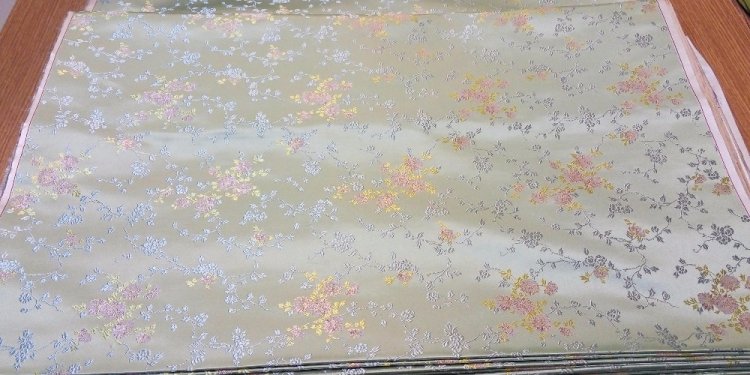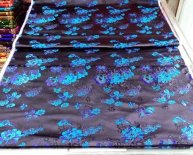
Brocade Silk Fabric
Banarasi brocades are one of the finest fabrics that India has to offer. It is a specialty of Varanasi, formerly known as Banaras, from which the fabric derives its name. Throughout history, brocade was a fabric of luxury worn by nobility in various cultures, from India to Korea. Brocade is a heavy fabric similar to jacquard with a raised pattern or floral design. Traditionally the pattern was produced with gold or silver thread said to be of such superb quality that they could be woven into fabric of pure gold and silver. There is evidence of different textured brocades since the Rig Vedic period c. 1750-500 BCE, including fabric of gold known as Hiranya Vastra. Silkora, a mixture of silk and cotton, is a modern textile innovation of Banarasi brocade.
In regular weaving, the weft thread passes over the warp thread. The weft is the transverse thread, and the warp thread extends through the length of the fabric. In brocade weaving, extra weft threads of different coloured silk or metallic threads, better known as zari, are woven into the base fabric to form a pattern. The use of zari is not only traditional in Banarasi brocade, but also in the embroidery art of Zardosi.
L: The process of weaving with silk in progress
R: Preparation of gold zari threads for the weaving of a brocade saree
Banarasi sarees are made in Varanasi, the city formerly known as Banaras. Sarees from Varanasi perfectly combine the finest Indian and Persian textile designs. The silk weaving industry in Varanasi is steeped in centuries of tradition and its hallmark is the Banarasi brocade saree. Designs are so intricate that to weave one such saree it can take anywhere between 14 days to six months to complete. For this reason, they are recognised throughout India as a sign of opulence and elegance.
L: A variety of patterns commonly found on Banarasi sarees
R: Close-up of a Banarasi brocade saree
Today, as it was traditionally, weaving of the sarees is done at home for as many as 1, 200, 000 people, all of whom have come from a lineage of association with the handloom silk industry in and around Varanasi. The Geographic Indication (GI) status given to Banarasi brocade means that brocade sarees made only in the districts of Varanasi, Chandauli, Mirzapur, Jaunpur, Bhadohi and Azamgarh in Uttar Pradesh can be authentically identified as Banarasi saree or brocade. Banarasi sarees are often the saree of choice for women attending important events and are routinely included in a bride's trousseau. Banarasi sarees are even regarded as heirlooms, being passed down from one generation to the next. The four main fabric varieties of Banarasi sarees are: pure silk katan, organza with zari and silk kora, georgette, a sheer lightweight crêpe fabric, and shattir, used in modernised Banarasi sarees.

















